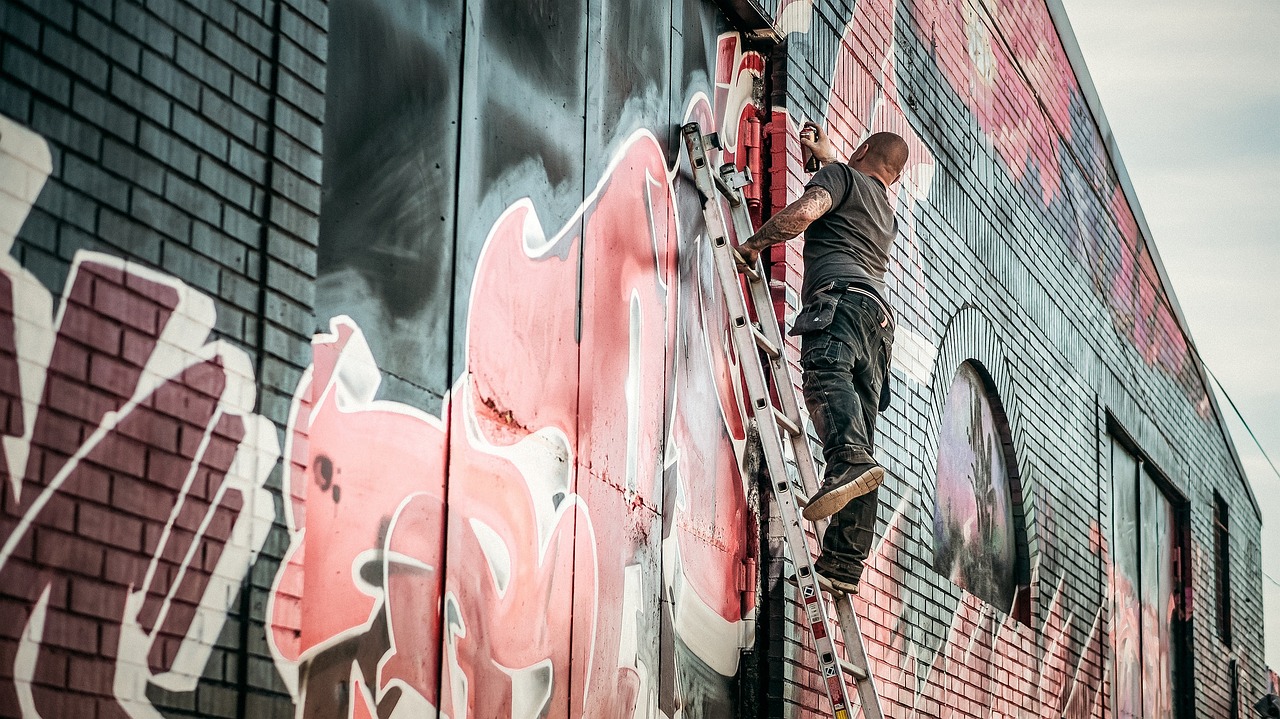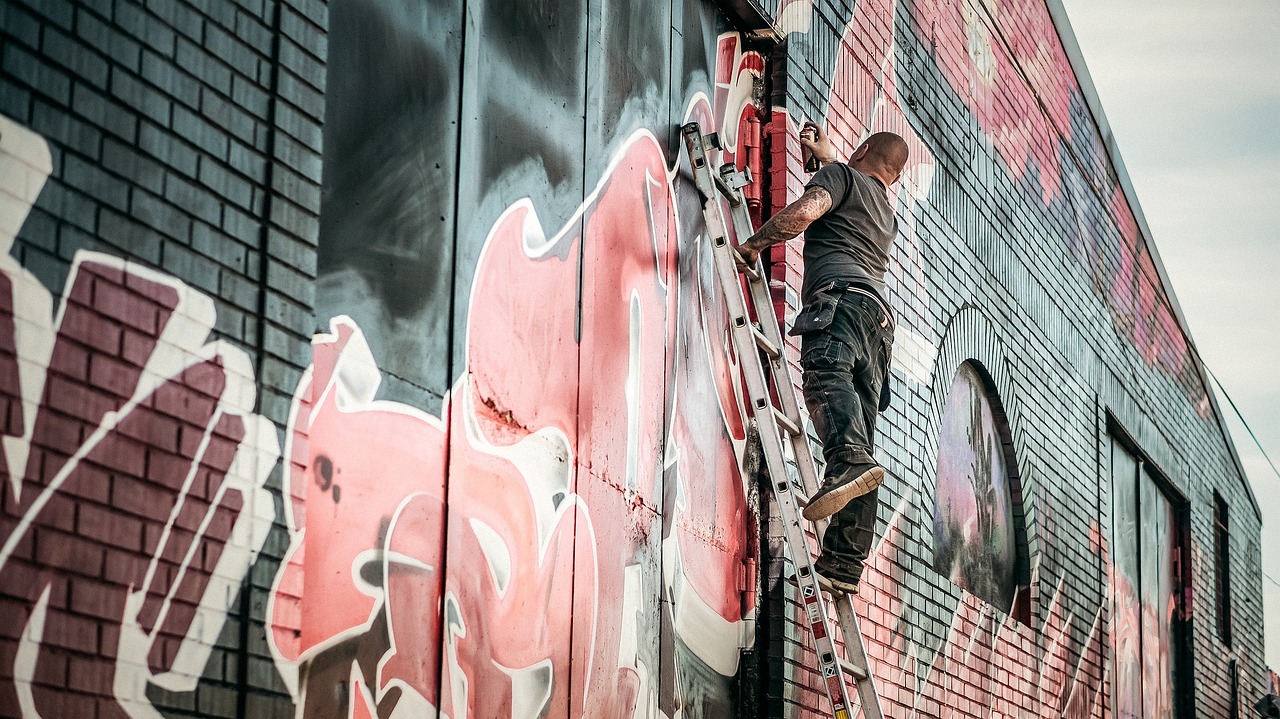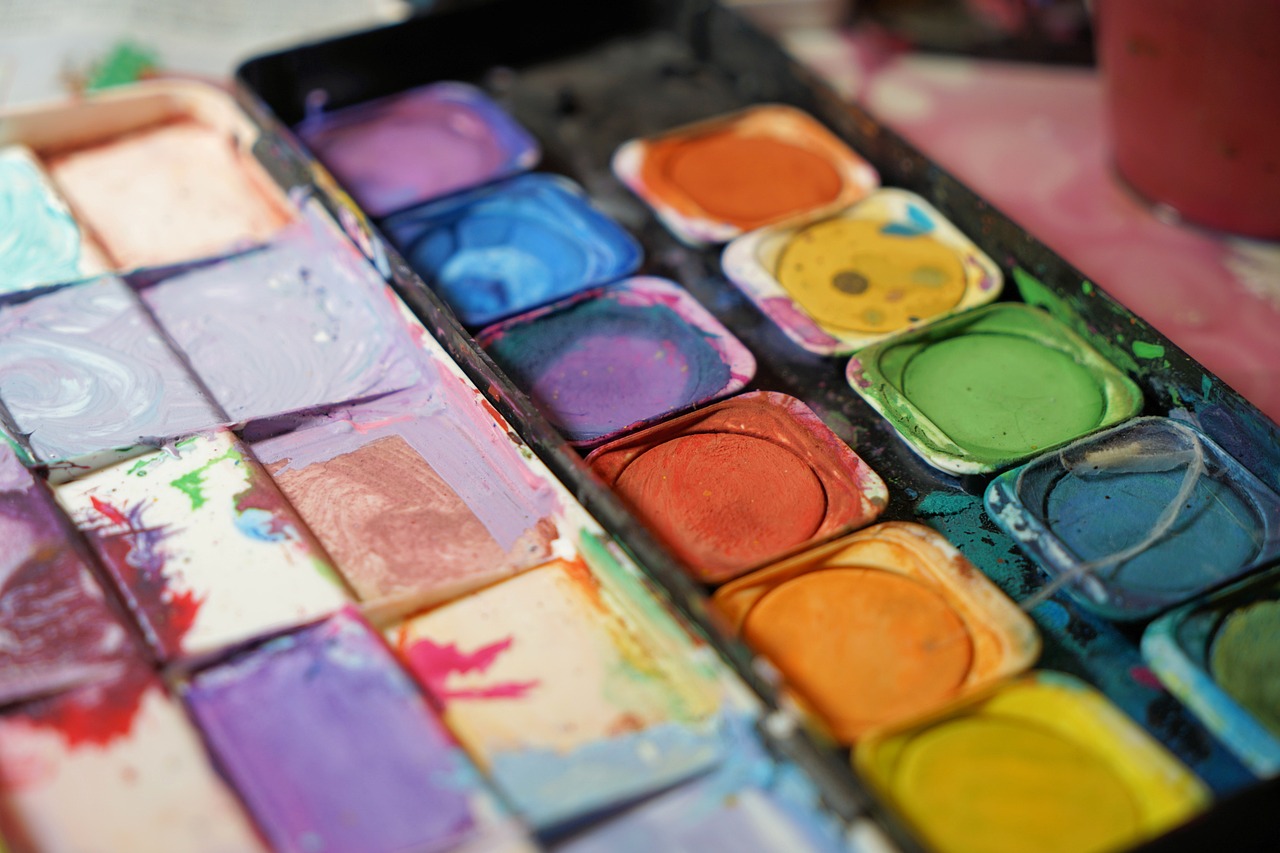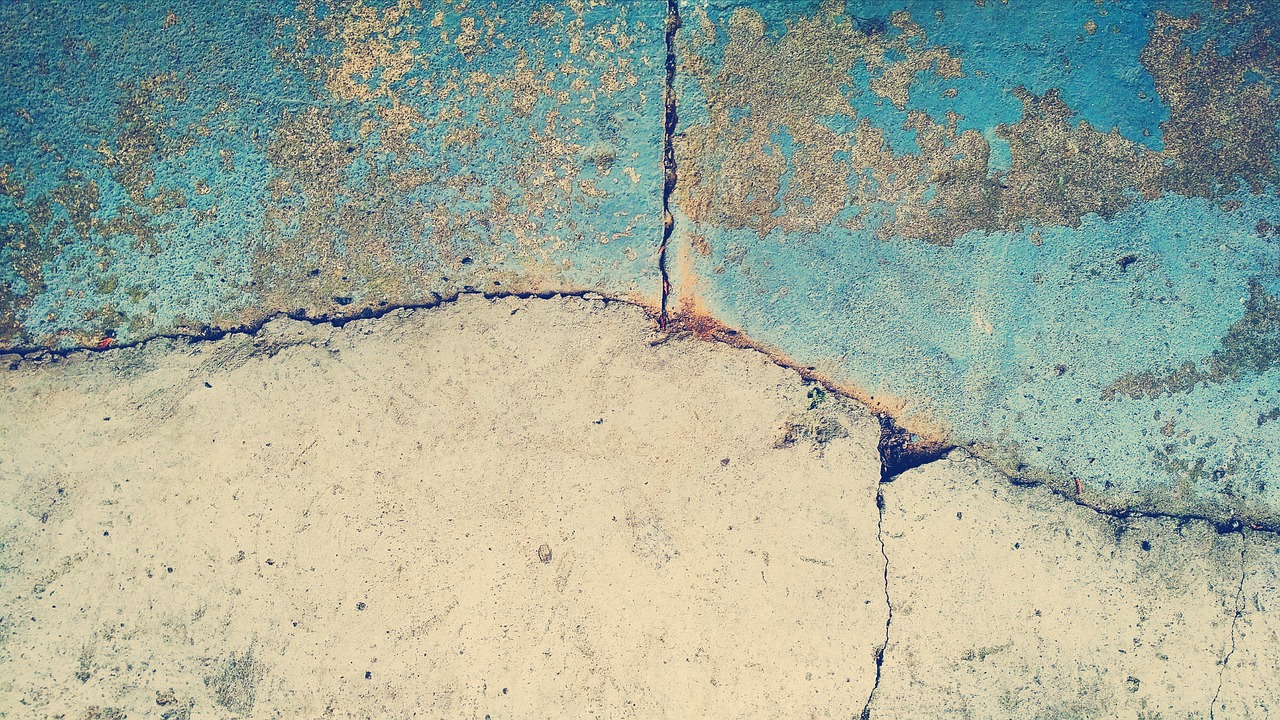How to Create a Winning Art Portfolio
Creating an impressive art portfolio is more than just slapping together a few of your favorite pieces; it’s about curating a visual narrative that captures your unique artistic voice. This article provides essential guidance on crafting an impressive art portfolio that showcases your unique skills and creativity, helping you stand out in the competitive art world. Whether you're a seasoned artist or just starting out, knowing how to present your work effectively can make all the difference in attracting potential clients, galleries, or even just art enthusiasts. So, let’s dive into the essentials of building a portfolio that not only looks good but also tells your story.
Identifying your target audience is crucial for tailoring your portfolio. Knowing who will view your work allows you to present art that resonates with their interests and expectations. Are you aiming to attract gallery owners, art collectors, or perhaps fellow artists? Each group has different preferences and expectations. For instance, galleries might be interested in your artistic range and technical skills, while collectors may look for pieces that speak to their personal tastes. By understanding your audience, you can select and present your work in a way that captivates them.
Selecting pieces that best represent your style and skills is vital. A well-curated selection highlights your strengths and demonstrates your artistic journey effectively. Think of your portfolio as a storybook; each piece should contribute to the narrative you want to tell. Consider including:
- Your most recent works to show your current style and skills.
- Pieces that have received positive feedback or awards.
- Artwork that showcases your versatility and growth as an artist.
By thoughtfully choosing your artwork, you can create a compelling visual experience that keeps your audience engaged.
Focus on showcasing your strongest pieces. Quality over quantity is key; a few exceptional works can make a more significant impact than numerous mediocre ones. Think about it: would you rather see a hundred average paintings or a handful of masterpieces? The latter sticks with you, right? This principle applies to your portfolio as well. Aim to include around 10 to 15 of your best pieces that truly reflect your artistic capabilities and vision.
Including a range of mediums in your portfolio can showcase your versatility as an artist. This approach can attract diverse audiences and potential clients. For example, if you’re skilled in painting, sculpture, and digital art, don’t hesitate to include samples from each. This variety not only highlights your technical skills but also shows your adaptability and creativity. However, be careful not to stray too far from your core style; you want your portfolio to feel cohesive.
While variety is important, maintaining a consistent style throughout your portfolio helps establish your artistic identity. This coherence makes your work more memorable and recognizable. Think of your favorite artists; their style is often what draws you in, right? By keeping a consistent visual language—whether it’s through color palettes, themes, or techniques—you create a signature that viewers can associate with you.
Incorporating sketches, drafts, or behind-the-scenes photos can provide insight into your creative process. This transparency can engage viewers and deepen their appreciation for your work. People love to see how an idea evolves into a finished piece; it adds depth to your portfolio. Consider adding a section that showcases your creative journey, making it relatable and engaging for your audience.
The way you present your portfolio can significantly influence its reception. A polished, professional presentation enhances the overall impact of your art. Whether you choose a digital or physical format, ensure that your work is displayed in a clean, organized manner. Use high-quality images and consider the layout carefully; a cluttered portfolio can detract from your art. Remember, first impressions matter!
Deciding between a digital or physical portfolio depends on your goals. Each format has its advantages and can be tailored to suit different audiences and contexts. A digital portfolio can be easily shared online, allowing for a broader reach. In contrast, a physical portfolio can create a more personal experience during meetings or interviews. Think about where you’ll be presenting your work and choose the format that best suits your needs.
Building an online portfolio can broaden your reach and accessibility. Utilizing social media and personal websites helps you connect with a wider audience and potential clients. Platforms like Instagram, Behance, or your own website can serve as excellent showcases for your art. Regularly update your online presence to keep your audience engaged and informed about your latest projects and exhibitions.
Q: How many pieces should I include in my portfolio?
A: Aim for around 10 to 15 of your best works to keep it focused and impactful.
Q: Should I include older works in my portfolio?
A: Only include older works if they showcase your skills effectively and contribute to your artistic narrative.
Q: How often should I update my portfolio?
A: Regularly update your portfolio to include new works and reflect your evolving style.

Understanding Your Audience
When it comes to crafting an art portfolio, understanding your audience is like having a secret map that leads you straight to your treasure. Imagine standing in a crowded gallery, your art on display, but you have no clue who’s admiring it. Wouldn’t that feel a bit like shouting into the void? That’s why it’s essential to identify your target audience before you even start assembling your portfolio.
Knowing who will view your work allows you to tailor your selections and presentation to resonate with their interests and expectations. Are you aiming to impress gallery owners, potential clients, or art enthusiasts? Each group has its own preferences and criteria for what they consider appealing. For instance, a gallery owner might be looking for pieces that fit a specific theme or trend, while a client might be more interested in how your style can enhance their space.
To get a clearer picture of your audience, consider the following factors:
- Demographics: Age, gender, and cultural background can influence artistic preferences.
- Interests: What type of art do they typically engage with? Are they drawn to realism, abstract, or contemporary styles?
- Artistic Trends: Stay updated with current trends in the art world. What’s hot right now?
By understanding these elements, you can create a portfolio that not only showcases your unique skills but also speaks directly to the hearts of your viewers. Think of it as a conversation; if you know what the other person is interested in, you can steer the dialogue in a way that captivates them. This connection can make all the difference in how your work is perceived.
Moreover, engaging with your audience doesn’t stop at understanding them. It’s also about creating a narrative that resonates. Share your story—what inspired you to create each piece? What emotions do you want to evoke? When viewers feel a connection to the story behind the art, they are more likely to remember and appreciate it.
In conclusion, understanding your audience is not just a step in the portfolio creation process; it’s the backbone of your artistic journey. By tailoring your portfolio to meet the expectations and interests of your audience, you not only enhance your chances of standing out but also build lasting connections that can lead to exciting opportunities in the art world.

Choosing the Right Artwork
When it comes to crafting an exceptional art portfolio, one of the most critical steps is . This isn’t just about picking your favorite pieces; it’s about selecting works that truly represent your unique style and artistic evolution. Think of your portfolio as a storybook of your creative journey, where each piece plays a vital role in narrating your artistic identity. So, how do you choose the right artwork?
First and foremost, consider the theme and message you want to convey. Every artist has a distinct voice, and your portfolio should reflect that. Are you drawn to vibrant colors, abstract forms, or perhaps a more minimalist aesthetic? Identifying your core themes will help you curate a selection that resonates with your artistic vision. For instance, if you often explore themes of nature, ensure that your chosen pieces effectively communicate that connection.
Next, focus on showcasing your strongest pieces. It’s tempting to include every artwork you’ve ever created, but remember: quality trumps quantity. A few outstanding pieces can leave a more lasting impression than a plethora of mediocre works. Think about the pieces that have received the most praise or have sparked meaningful conversations. These are likely your standout works that deserve a place in your portfolio.
Moreover, consider the variety of mediums you employ. Including a range of mediums can highlight your versatility as an artist. For example, if you work with both acrylics and digital art, showcasing both can attract a wider audience. However, be cautious—while variety is essential, it’s equally important to maintain a consistent style. This balance helps to create a cohesive narrative throughout your portfolio, making it more memorable and recognizable.
As you select your artwork, don’t forget to think about the progression of your skills. Your portfolio should not only showcase your best work but also illustrate your artistic journey. Including earlier pieces alongside more recent ones can demonstrate your growth and evolution as an artist. This narrative can be incredibly engaging for viewers, as it allows them to witness your development over time.
Finally, always keep your audience in mind. Are you targeting galleries, potential clients, or art enthusiasts? Tailoring your selection to meet the expectations of your intended audience can significantly enhance the effectiveness of your portfolio. For instance, if you aim to attract commercial clients, consider including works that align with current market trends.
In summary, choosing the right artwork for your portfolio is a blend of self-reflection, strategic selection, and audience awareness. By focusing on quality, variety, and consistency, you can create a compelling showcase that not only highlights your artistic talent but also tells your unique story as an artist.
- How many pieces should I include in my portfolio? Aim for 10-20 well-selected pieces that showcase your best work.
- Is it important to include a variety of mediums? Yes, showcasing different mediums can demonstrate your versatility, but ensure they align with your overall style.
- Should I include older works in my portfolio? Including older works can show your artistic growth, but be selective to ensure they still represent your current style.
- How can I tailor my portfolio for different audiences? Research your target audience and choose pieces that align with their interests and expectations.

Highlighting Your Best Work
When it comes to creating an art portfolio, is an absolute game-changer. Think of your portfolio as a gallery where only the finest pieces should hang. You want to captivate your audience from the very first glance, and the best way to do this is by showcasing your strongest pieces. Quality truly trumps quantity here; a few exceptional works can leave a lasting impression, while a collection of mediocre pieces might just blend into the background.
Imagine walking into an art exhibition where every piece is stunning. You’re drawn to the artwork that resonates with you the most, right? This is the same experience you want to create for your viewers. Aim for a selection that not only demonstrates your technical skills but also reflects your unique style and artistic voice. When curating your portfolio, consider these key factors:
- Emotional Impact: Choose pieces that evoke emotion. Art that tells a story or connects with viewers on a personal level stands out.
- Technical Mastery: Showcase works that highlight your skills. Whether it's painting, sculpture, or digital art, let your technical prowess shine.
- Personal Connection: Include pieces that have personal significance to you. This authenticity can resonate with viewers and create a deeper connection.
It’s also essential to think about the flow of your portfolio. Arrange your pieces in a way that guides the viewer’s eye naturally from one work to the next. You might want to start with your strongest piece, create a narrative through the selection, and end with another impactful work that leaves a lasting impression. Think of it as telling a story where each chapter builds on the last, leading to a satisfying conclusion.
Additionally, don’t shy away from including a mix of styles or themes, as long as they are cohesive. This can demonstrate your versatility and adaptability as an artist. However, remember that while variety is exciting, consistency in style is equally important. It helps in establishing your artistic identity and makes your work more recognizable.
In the end, your portfolio should feel like a curated exhibition of your artistic journey. Each piece should reflect not just your technical skills but also your personal growth as an artist. By thoughtfully selecting and presenting your best work, you’ll not only grab attention but also invite viewers into your creative world.
- How many pieces should I include in my portfolio? Aim for 10-15 of your best works. Quality over quantity is key!
- Should I include older works? Only include older works if they demonstrate your growth or are exceptionally strong. Otherwise, focus on your most recent pieces.
- Is it better to have a digital or physical portfolio? It depends on your audience. Digital portfolios are more accessible, while physical portfolios can offer a tactile experience.

Variety in Mediums
When it comes to creating an art portfolio, one of the most exciting aspects is the opportunity to showcase a variety of mediums. Think of your portfolio as a vibrant tapestry, where each thread represents a different medium you've explored. This not only highlights your versatility as an artist but also keeps your audience engaged and intrigued. Imagine walking into an art gallery; the diverse array of artworks catches your eye and invites you to explore further. Similarly, a portfolio that includes multiple mediums can create that same sense of wonder and curiosity.
Incorporating different mediums—such as painting, drawing, sculpture, photography, and digital art—allows you to express your creativity in various forms. Each medium brings its own unique qualities and challenges, offering a fresh perspective on your artistic vision. For instance, a stunning oil painting can evoke emotions in a way that a meticulously crafted sculpture may not. By showcasing both, you demonstrate your ability to convey ideas and feelings through different channels.
Moreover, a diverse portfolio can appeal to a broader audience. Potential clients or galleries may have specific preferences, and by presenting a range of mediums, you increase the likelihood of connecting with their interests. It’s like being at a buffet—some people may crave the savory flavors of a hearty dish, while others might prefer the sweetness of a dessert. By offering a variety of options, you cater to different tastes and preferences.
However, while embracing variety is essential, it’s equally important to maintain a sense of coherence in your portfolio. This doesn’t mean you should limit yourself to one style or medium; rather, aim to create a narrative that ties your works together. Consider how each piece relates to your overarching artistic journey. This can be achieved through thematic connections or using a consistent color palette across different mediums.
To illustrate this concept further, here’s a simple table that showcases different mediums and their potential impact:
| Medium | Impact on Audience |
|---|---|
| Painting | Evokes emotional depth and personal connection |
| Sculpture | Creates a tactile experience and spatial awareness |
| Photography | Captures reality and moments in time |
| Digital Art | Offers limitless possibilities and experimentation |
In conclusion, embracing a variety of mediums in your art portfolio not only showcases your skills but also reflects your artistic evolution. It invites viewers into your world, allowing them to appreciate the different facets of your creativity. So, don’t hesitate to explore and experiment—your portfolio is your canvas, and every medium you choose adds depth to your artistic narrative.
Q1: Why is it important to include different mediums in my art portfolio?
A1: Including different mediums showcases your versatility and creativity, appealing to a broader audience and potential clients.
Q2: How can I maintain coherence in a portfolio with various mediums?
A2: You can maintain coherence by creating thematic connections or using a consistent color palette across different works.
Q3: What are some examples of mediums I should consider including?
A3: Consider including painting, drawing, sculpture, photography, and digital art to highlight your diverse skill set.

Consistency in Style
When it comes to creating an art portfolio, is not just a nice-to-have; it's a must-have. Imagine walking into a gallery where each piece looks like it belongs to a different artist. Confusing, right? A consistent style acts like a signature, allowing your audience to recognize your work instantly. It’s about creating a cohesive narrative that ties your pieces together, making it easier for viewers to understand your artistic vision.
But how do you achieve this consistency? First, consider your color palette. Sticking to a few key colors can help unify your artwork. For instance, if you often use warm tones, try to maintain that warmth across your pieces. This doesn’t mean you can’t experiment, but having a recognizable palette will make your work feel more intentional.
Your technique also plays a crucial role. Whether you lean towards realism, abstraction, or impressionism, try to keep your methods aligned. This doesn’t mean you can’t try new things; rather, it’s about ensuring that your core techniques remain identifiable. Think of it like a musician who has a signature sound; even if they explore different genres, their unique style always shines through.
Additionally, consider the themes you explore in your art. If you often depict nature, societal issues, or emotional landscapes, keep those themes consistent. This thematic unity not only helps in establishing your artistic identity but also makes your portfolio more engaging. Viewers are drawn to stories, and a consistent theme allows them to follow your narrative journey.
Finally, don’t underestimate the power of presentation. The way you frame your pieces, the layout of your portfolio, and even the titles you choose can contribute to the overall consistency of your style. A well-organized portfolio that reflects your artistic voice will leave a lasting impression.
In short, maintaining a consistent style in your art portfolio is about creating a recognizable and cohesive body of work. It allows your audience to connect with you on a deeper level and makes your art more memorable. So, take the time to refine your style, and watch as your portfolio transforms into a powerful tool that speaks volumes about who you are as an artist.
- What if I want to explore different styles?
It's completely okay to explore different styles! Just ensure that your portfolio highlights your main style while allowing for some experimentation. - How many pieces should I include to maintain consistency?
A good rule of thumb is to include around 10-15 pieces that showcase your style effectively without overwhelming your audience. - Can I change my style over time?
Absolutely! Artists evolve, and it's natural for your style to change. Just be mindful of how you present this evolution in your portfolio.

Including Process Documentation
When it comes to creating an art portfolio, one element that often gets overlooked is process documentation. Many artists focus solely on the final pieces, but showing your journey can be just as impactful, if not more so. Think of it this way: just like a great movie reveals the behind-the-scenes magic that makes the story come alive, your portfolio can benefit from showcasing the steps that led to your finished works. This not only adds depth to your portfolio but also invites viewers into your creative world.
So, what exactly does process documentation entail? It's all about sharing the raw, unfiltered moments of your artistic journey. Whether it's sketches, drafts, or even photographs of you in action, these elements can give your audience a glimpse into your creative thought process. Imagine flipping through a book that not only shows the final illustrations but also the messy doodles and brainstorming notes that led to those vibrant images. It creates a narrative that engages your audience on a deeper level.
Including this kind of documentation can also help to humanize your art. People love stories, and when you share yours, it fosters a connection. For instance, if you have a series of paintings that evolved from a simple idea to a full-blown exhibition, showing the progression through sketches or photos can captivate potential clients or galleries. They can see not just the end result but the thought, effort, and passion that went into it. This transparency can enhance their appreciation for your work and make them more likely to invest in it.
Here are a few effective ways to incorporate process documentation into your portfolio:
- Sketches and Drafts: Include the initial sketches or drafts that led to your final pieces. This shows your planning and evolution as an artist.
- Behind-the-Scenes Photos: Take candid shots of you working in your studio. This gives viewers a personal touch and allows them to see your workspace and tools.
- Written Reflections: Consider adding short descriptions or stories about each piece. What inspired you? What challenges did you face? This narrative can enrich the viewer's experience.
In the end, incorporating process documentation into your art portfolio is about embracing vulnerability and authenticity. It’s an opportunity to share not just what you create, but how you create it. By doing so, you offer a more rounded perspective of your work, which can resonate with viewers, collectors, and critics alike. Remember, art is not just about the final product; it's about the journey, the struggles, and the triumphs that come along the way.
1. Why should I include process documentation in my portfolio?
Including process documentation helps to tell the story behind your artwork, engaging viewers and potential clients. It provides insight into your creative process, making your work more relatable and memorable.
2. What types of process documentation should I include?
You can include sketches, drafts, behind-the-scenes photos, and written reflections about your creative journey. Each of these elements adds depth to your portfolio.
3. How can I present my process documentation effectively?
Consider creating a dedicated section in your portfolio for process documentation. You can organize it by project or artwork, ensuring that it complements the final pieces without overwhelming them.
4. Will including process documentation make my portfolio too cluttered?
Not at all! The key is to be selective and organized. Choose pieces that genuinely add value to your story and present them in a clean, cohesive manner.
5. Can I use social media to share my process documentation?
Absolutely! Social media platforms are excellent for sharing your creative process in real-time. You can post updates, stories, and even video snippets of your work in progress to engage your audience.

Presentation Matters
When it comes to showcasing your art, presentation is everything. Think of your portfolio as a first date; you want to make a great impression right from the start. Just as you would choose your outfit carefully, the way you present your artwork can either captivate your audience or leave them indifferent. A well-organized and visually appealing portfolio not only highlights your creativity but also reflects your professionalism as an artist.
Imagine walking into a gallery where the artwork is framed beautifully, the lighting is perfect, and the overall ambiance complements the pieces on display. That’s the kind of experience you want to create for your audience. Whether you opt for a digital or physical portfolio, the key is to ensure that every element enhances the viewing experience. For instance, if you're going digital, consider the layout, color scheme, and navigation. These factors can significantly affect how your work is perceived.
Here are some essential aspects to consider when presenting your portfolio:
- Quality Over Quantity: It's better to have a few stunning pieces than a plethora of mediocre ones. Choose your best works to showcase, as these will leave a lasting impression.
- Consistent Theme: Maintain a cohesive theme throughout your portfolio. This doesn’t mean all your pieces should look the same, but there should be a recognizable thread that ties them together.
- Professional Presentation: Whether it’s a sleek website or a beautifully bound book, invest time and effort into making your portfolio look polished. This shows that you take your art—and your career—seriously.
Additionally, consider including a brief artist statement at the beginning of your portfolio. This statement can serve as a personal touch that connects you with your audience, providing insight into your artistic vision and the concepts behind your work. Remember, storytelling is a powerful tool; it can evoke emotions and engage viewers on a deeper level.
Lastly, don't underestimate the power of feedback. Before finalizing your portfolio, share it with trusted peers or mentors. Their insights can help you refine your presentation, ensuring that it resonates well with your intended audience. A fresh pair of eyes can spot inconsistencies or areas that need improvement that you might have overlooked.
In conclusion, the way you present your art can significantly influence its reception. A thoughtfully curated and beautifully presented portfolio not only showcases your artistic talents but also demonstrates your commitment to your craft. So, take the time to invest in your presentation; it could be the difference between being noticed and being overlooked in the competitive art world.
Here are some common questions regarding art portfolio presentation:
- What should I include in my portfolio? Aim to include your best works, a variety of mediums, and an artist statement to provide context.
- Should I have both digital and physical portfolios? Yes, having both can help you reach different audiences effectively.
- How often should I update my portfolio? Regularly updating your portfolio with new work is essential to keep it fresh and relevant.

Digital vs. Physical Portfolios
When it comes to showcasing your artistic talents, the choice between a digital and a physical portfolio can feel a bit like choosing between a paintbrush and a pencil—both are tools, but each serves a different purpose and audience. So, how do you decide which one is right for you? Let’s dive into the advantages of both formats to help you make an informed decision.
A digital portfolio is incredibly versatile and accessible. With the internet at our fingertips, sharing your work has never been easier. You can create a stunning online gallery that is not only visually appealing but also interactive. Imagine a potential client or gallery owner scrolling through your work from the comfort of their own home, clicking on images to see them in detail or even watching videos of your creative process. The world is your oyster when you go digital!
However, while digital portfolios are convenient, they can sometimes lack the tactile experience that a physical portfolio provides. A physical portfolio allows viewers to engage with your artwork in a more personal way. There's something special about flipping through pages, feeling the texture of the paper, and seeing the colors in real life. It adds a layer of intimacy and can leave a lasting impression. Plus, if you’re attending an art show or a gallery opening, having a physical portfolio in hand can make you feel more professional and prepared.
Here’s a quick comparison to illustrate the key differences:
| Feature | Digital Portfolio | Physical Portfolio |
|---|---|---|
| Accessibility | Accessible anywhere with internet | Requires physical presence |
| Interactivity | Can include videos and animations | Static images only |
| Cost | Low cost for hosting and maintenance | Printing and binding costs |
| Impression | Modern and tech-savvy | Classic and personal |
Ultimately, the choice between a digital and physical portfolio depends on your goals and the audience you’re trying to reach. If you aim to connect with a broader audience and showcase your work online, a digital portfolio is the way to go. On the other hand, if you’re looking to make a strong impact during face-to-face meetings or events, a physical portfolio can help you stand out.
Many artists find success in combining both formats. Imagine having an online portfolio to attract clients and a beautifully printed version for in-person meetings. This dual approach not only maximizes your reach but also ensures you’re prepared for any situation that comes your way.
- Can I have both a digital and a physical portfolio? Absolutely! Many artists use both to reach different audiences and make the most of their opportunities.
- How often should I update my portfolio? It’s a good idea to update your portfolio regularly, especially after completing new projects or learning new techniques.
- What should I include in my portfolio? Focus on your best work, showcasing a variety of styles and mediums while maintaining a consistent theme or message.

Creating an Online Presence
In today's digital age, creating an online presence is not just an option for artists; it's a necessity. Think of your online portfolio as your virtual gallery—it's where potential clients, galleries, and art enthusiasts can view your work anytime, anywhere. But how do you make your online presence stand out in a sea of creativity? It starts with a well-thought-out strategy that highlights your unique artistic voice.
First and foremost, you need to establish a personal website. This is your digital home and should reflect your style and personality. Use a clean, modern design that allows your artwork to shine without distractions. Include sections like 'About Me,' 'Portfolio,' and 'Contact' to provide visitors with a comprehensive view of who you are and what you do. Here’s a simple structure to consider:
| Section | Description |
|---|---|
| About Me | A brief introduction that tells your story, influences, and artistic journey. |
| Portfolio | A curated selection of your best work, categorized by medium or theme. |
| Blog (optional) | Share insights about your creative process, exhibitions, or art-related topics. |
| Contact | Provide a way for visitors to reach out for commissions or inquiries. |
Next, leverage social media platforms to amplify your reach. Platforms like Instagram, Pinterest, and Facebook are visual-centric and perfect for showcasing your artwork. Here are some tips to effectively use social media:
- Consistency is Key: Post regularly to keep your audience engaged.
- Engage with Your Audience: Respond to comments and messages to build a community around your art.
- Use Hashtags Wisely: Research and use relevant hashtags to increase visibility.
Additionally, consider joining online art communities and forums. These platforms can provide valuable feedback, networking opportunities, and exposure to a broader audience. Websites like Behance and DeviantArt are excellent for connecting with fellow artists and potential clients. By participating in these communities, you can also stay updated on industry trends and opportunities.
Finally, don't underestimate the power of email marketing. Building a mailing list allows you to send updates about new artwork, upcoming shows, or exclusive offers directly to your fans. A well-crafted newsletter can keep your audience engaged and encourage them to share your work with others. Remember, your online presence is about creating connections, not just showcasing art.
In summary, creating an online presence is about more than just having a website; it's about building a brand that resonates with your audience. By combining a professional website, active social media engagement, participation in art communities, and effective email marketing, you can create a compelling online presence that showcases your talent and creativity. So, are you ready to take the digital plunge and show the world what you can do?
Q1: How do I choose the right platform for my online portfolio?
A1: Consider your target audience and the type of work you create. Platforms like Squarespace and Wix are great for custom websites, while Behance and ArtStation are excellent for community engagement.
Q2: How often should I update my online portfolio?
A2: Aim to update your portfolio every few months or whenever you complete a significant piece of work. Keeping your portfolio fresh shows that you are active and evolving as an artist.
Q3: Is it necessary to have a blog on my website?
A3: While it's not mandatory, a blog can enhance your online presence by providing insights into your creative process and keeping your audience engaged with regular content.
Frequently Asked Questions
- What is the purpose of an art portfolio?
An art portfolio serves as a visual resume, showcasing your best work and artistic journey. It's a way to present your skills, style, and creativity to potential clients, galleries, or schools. Think of it as your personal gallery that tells your story as an artist!
- How do I choose the right pieces for my portfolio?
Choosing the right pieces is all about quality over quantity. Focus on showcasing your strongest works that best represent your style and skills. It’s like picking the best apples from a tree; you want the ones that stand out and leave a lasting impression!
- Should I include different mediums in my portfolio?
Absolutely! Including a variety of mediums can demonstrate your versatility and attract a wider audience. However, ensure that there’s a consistent style that ties everything together. It's like being a chef who can cook multiple cuisines but has a signature dish!
- How important is the presentation of my portfolio?
Presentation is crucial! A polished and professional look can significantly enhance the impact of your art. Whether digital or physical, your portfolio should reflect the quality of your work. Think of it as dressing for an important interview; first impressions matter!
- What are the benefits of having an online portfolio?
An online portfolio broadens your reach and accessibility, allowing you to connect with a larger audience. It’s like having a gallery that’s open 24/7! Plus, utilizing social media can help you engage with potential clients and showcase your work to the world.
- How can I document my creative process?
Including sketches, drafts, or behind-the-scenes photos in your portfolio can provide insight into your creative process. This transparency engages viewers and deepens their appreciation for your work. It’s like inviting someone into your workshop to see how the magic happens!



















